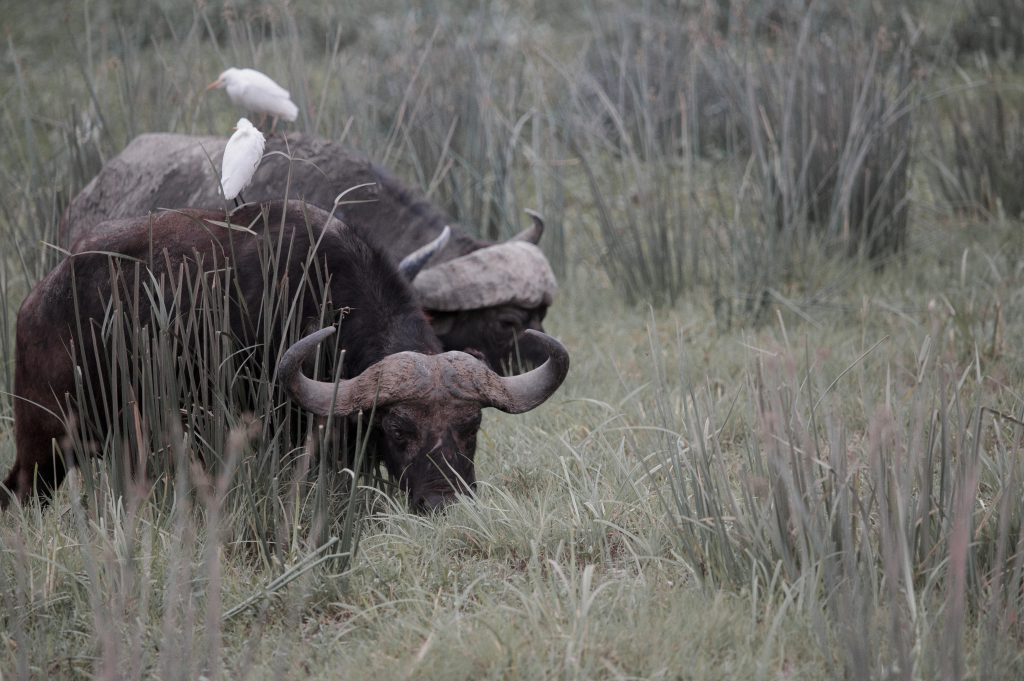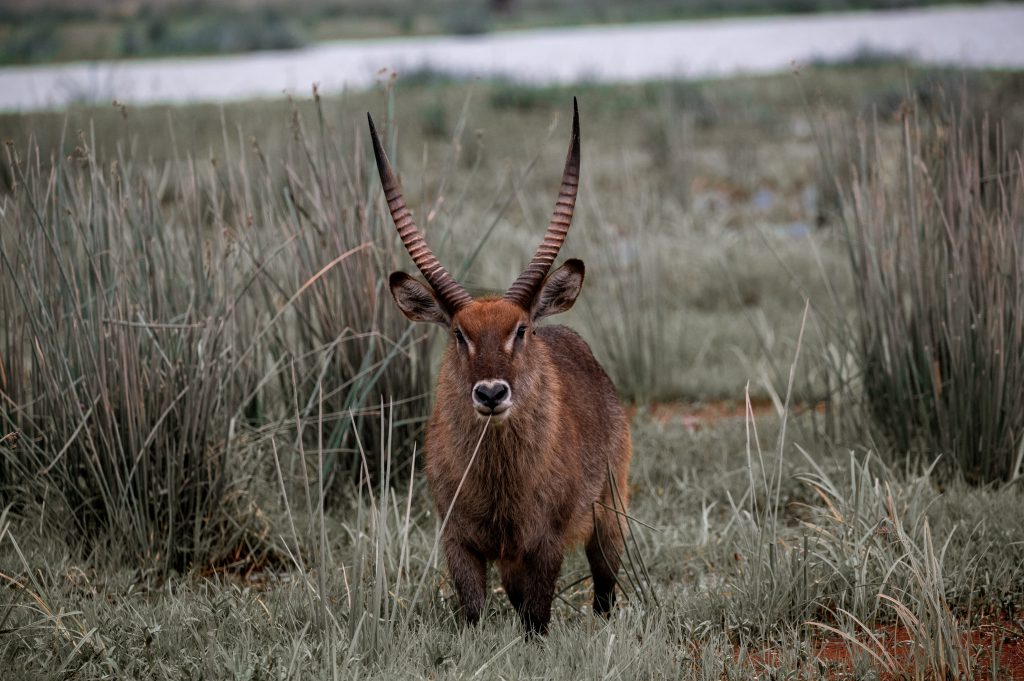Dear traveler, we may get commissions from your reservations made through links in this article, at no extra cost to you. This helps keep the site running and free for all. Thank you!
Last Updated on March 17, 2024
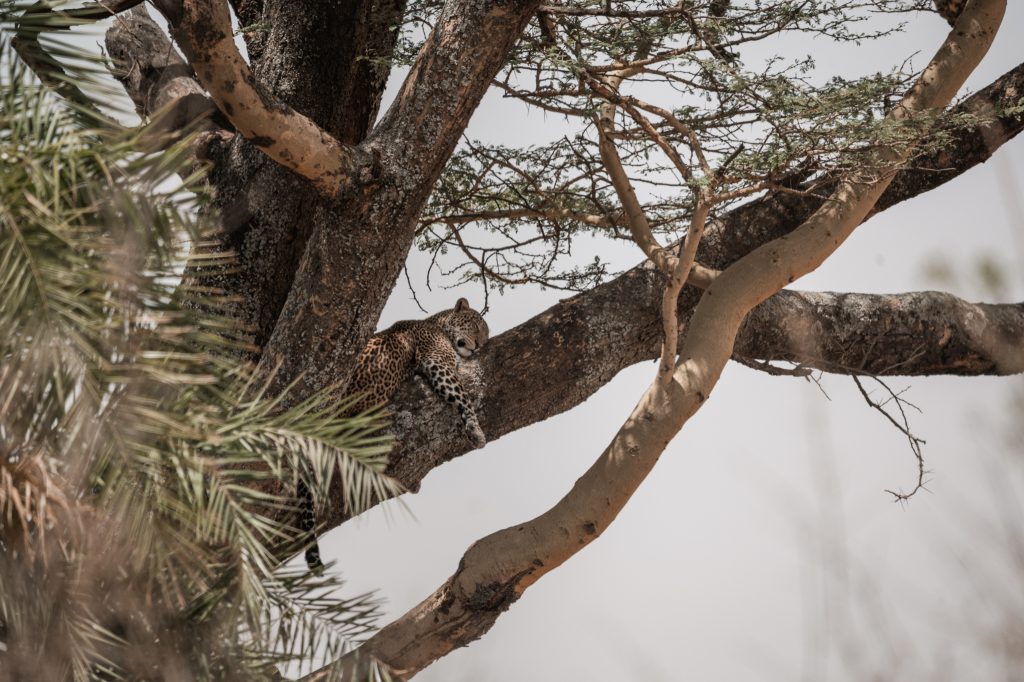
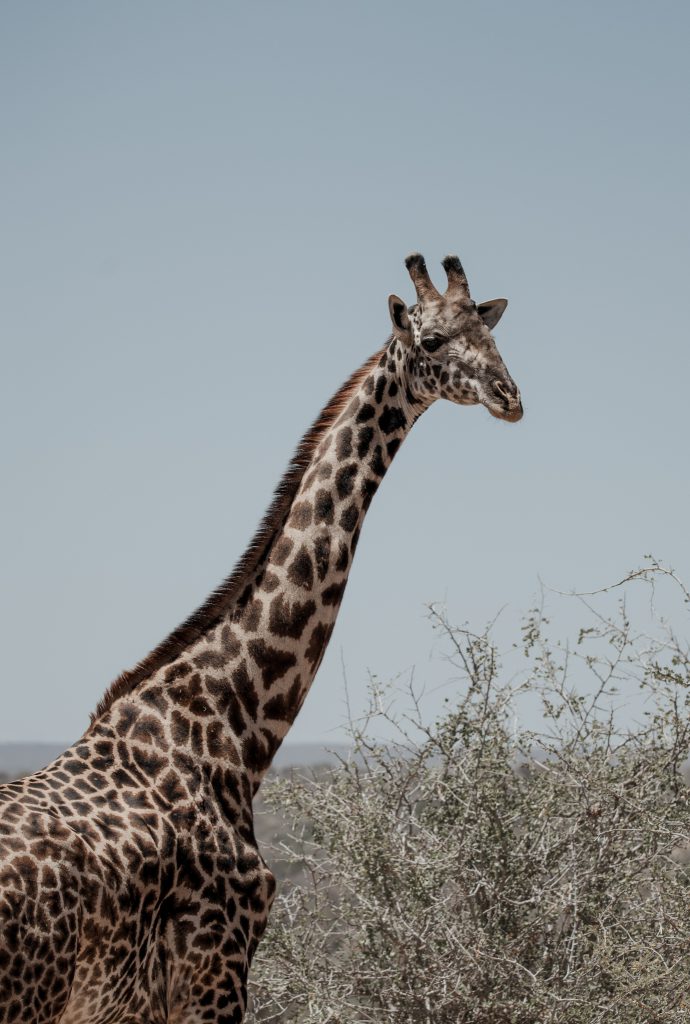
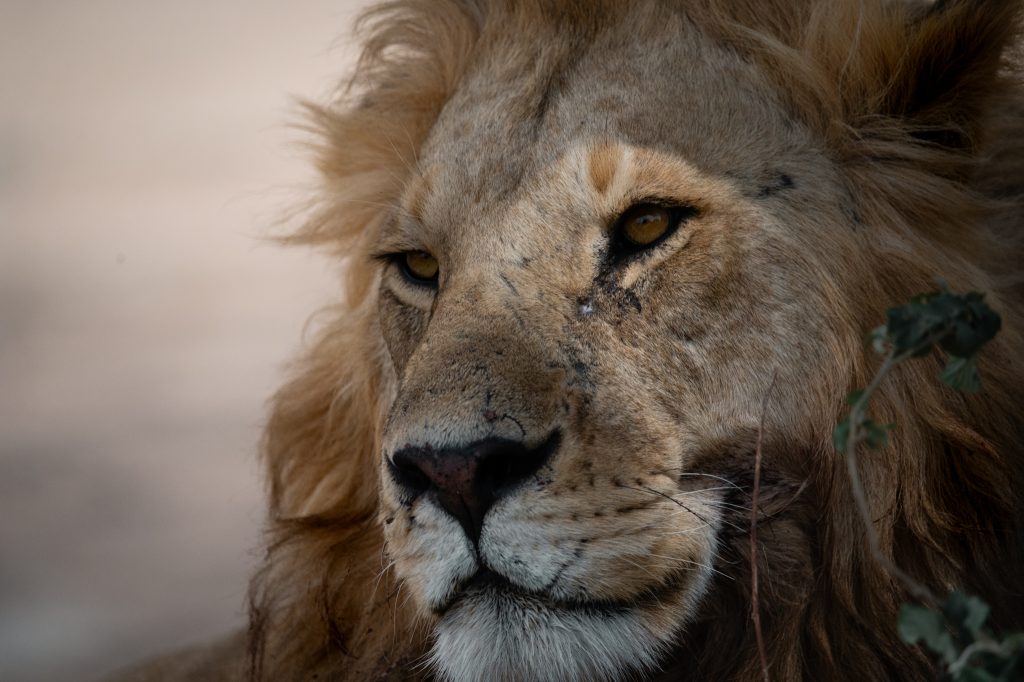
In this article we aim to provide you with the ultimate guide to be prepared for a Safari in Tanzania. Some of the information shared here can also be useful for a safari experience in a different country, like Kenya or South Africa.
Exploring Tanzania is a dream come true for those who love nature and wildlife. When you think of Tanzania, you probably picture the iconic Serengeti, but this country offers so much more – it’s a place where you can check off countless items from your bucket list: going on a safari, conquering the mighty Mount Kilimanjaro, and soaking up the sun on pristine beaches. Tanzania truly has something for everyone.
We can spend hours writing about how doing a safari in Tanzania is one of the best experiences you’ll have when traveling – so we decided to just do a short video to inspire you!
Planning a Safari: Considerations
Planning a safari can be quite a task, particularly if you’re uncertain about what you want to see and experience.
The easiest and most convenient approach, as we did, is to book your safari in advance through a reputable tour company. We chose “Soul of Tanzania” for our trip.
The first decision you’ll need to make is the duration of your safari. We opted for a 5-day safari, which turned out to be perfect for us. However, there are a few essential factors to consider:
- Arusha Arrival and Departure: Depending on your flight schedules, your first and last days could be spent in Arusha, the main city that is closer to the national parks and a common starting point. If you arrive late, we recommend spending the first day in Arusha. If your departure is late in the evening, you can use that day for an additional safari experience.
- Side Activities: Are you interested in adding a beach extension or perhaps climbing Kilimanjaro? These considerations may influence the length of your safari due to time and cost constraints.
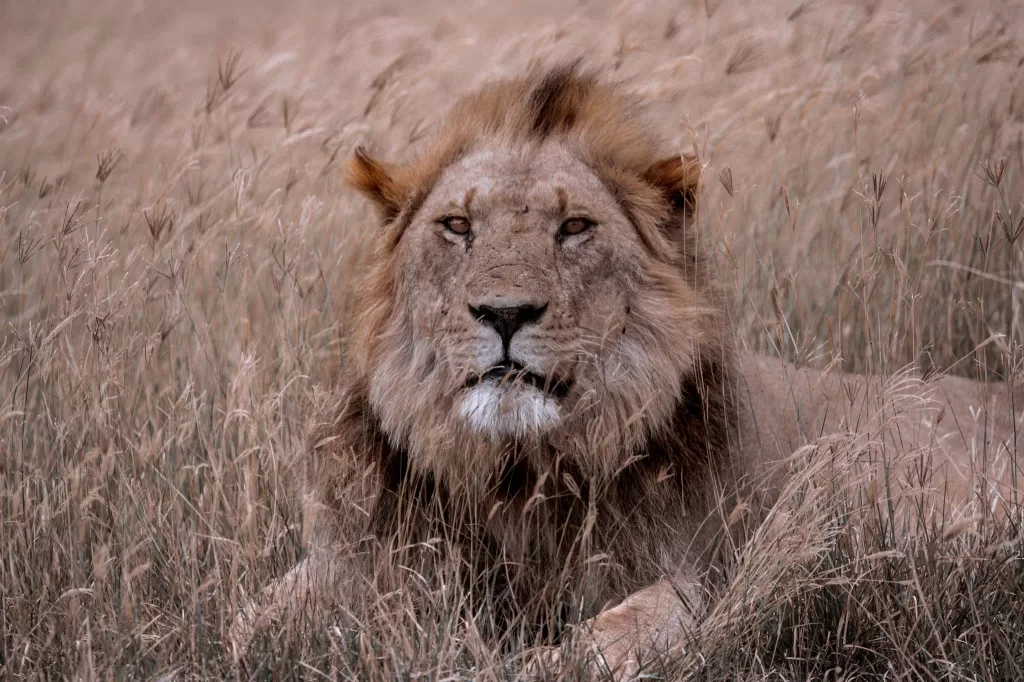
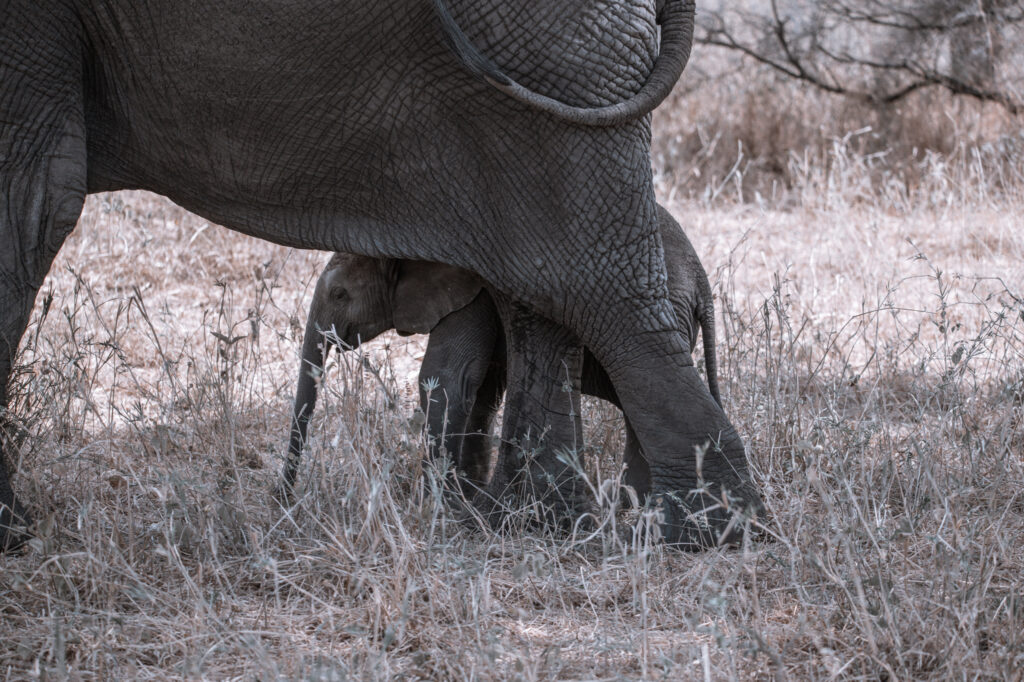
Type of Safaris: Average Cost
The cost of a safari can vary based on your preferences and choices. When it comes to planning your safari, you have several options to consider:
– Self-driving
– Booking through a tour company
– Arranging it via your hotel.
Self-driving in Tanzania national parks is allowed but our guide mentioned that it is highly uncommon and not recommended, unless you are really experienced in these type of trips and you can easily navigate in the territory. The chances of getting lost are high given the astonishing size of each of the parks.
Our recommendation is to book your safari through a reputable tour company. You can choose from both local or international operators, and prices may differ accordingly. Check “Choosing a Tour Company” for more information!
When you book with a tour operator, you’ll also need to select the level of comfort that suits your preferences. Options range from basic and budget-friendly to mid-range, luxury, and even “extra” luxury. While the cost of the safari itself depends on whether you opt for a private or group safari, the accommodation is a significant part of your trip budget.
In our personal experience, we mostly stayed in tented camps and thoroughly enjoyed the unique experience they offered.
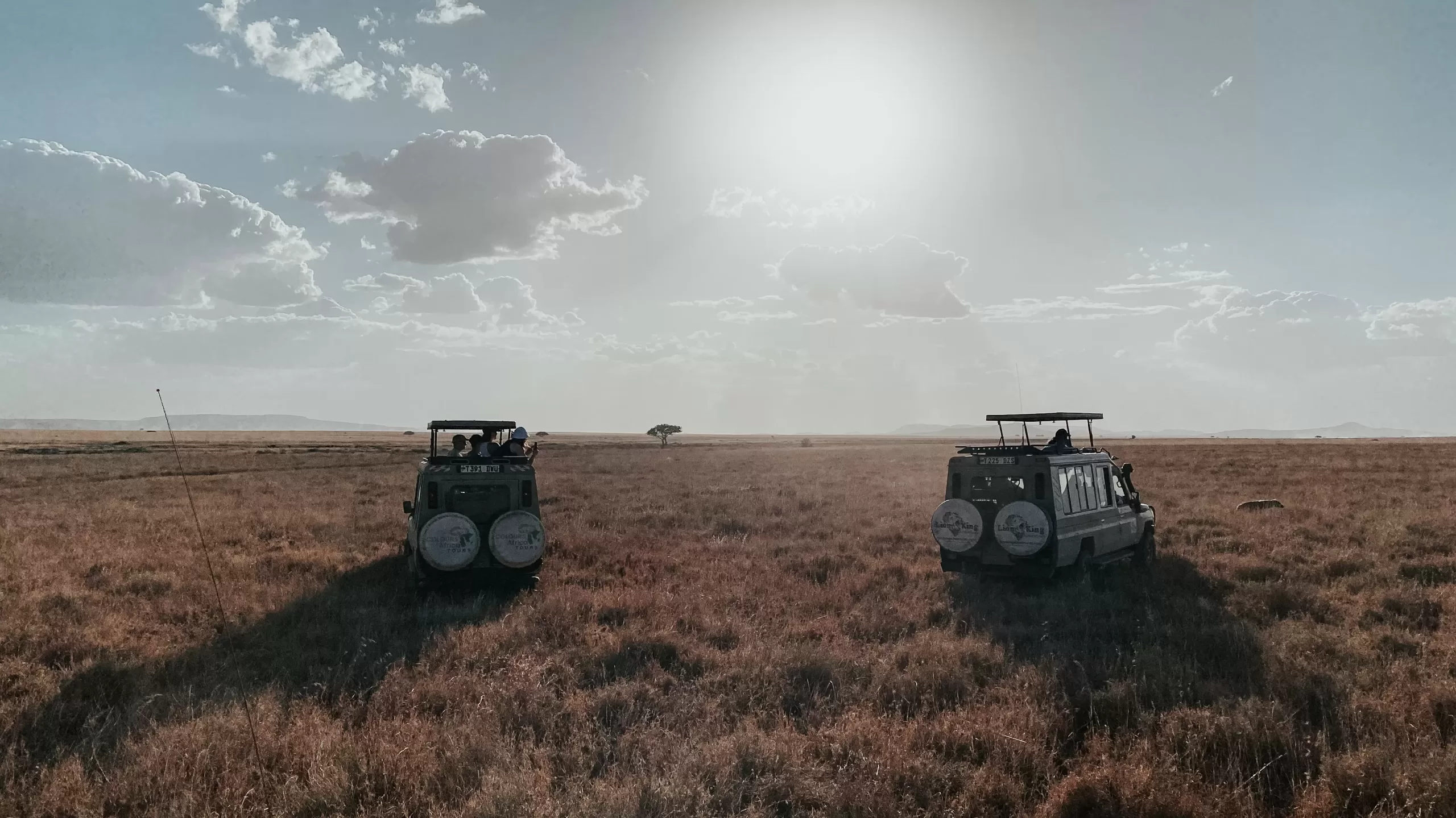
Another crucial decision to make is whether you’d like a private or group safari. Group safaris are typically more budget-friendly, but we opted for a private safari. This choice was driven by our passion for wildlife photography, as it allowed us to manage our time at each sighting more effectively. Typically, the price you pay includes the safari itself, accommodation, and all meals. Some operators also provide the flexibility to customize your itinerary and accommodations to align with your preferences.
According to SafariBookings, you can expect a safari in Tanzania to go from 250€ to 1000€ per day.
Choosing a Tour Company
Finding the right tour operator is crucial for a successful safari experience. You can easily access online reviews of various tour operators and even use platforms like Safari Bookings to compare different options. We recommend requesting quotes from a couple of operators and carefully comparing them.
While the tour company is undeniably important, what truly elevates your safari from memorable to unforgettable is your guide. Don’t hesitate to inquire about the company’s guides as well.
In our case, we opted for Soul of Tanzania and had an exceptional experience. Our guide was not only great but also extremely knowledgeable, with an in-depth understanding of the parks. This made us feel safe and allowed us to fully immerse ourselves in the safari without any concerns.
What Parks to Visit?
Our safari took us through three incredible parks:
- Tarangire: Highly recommended for elephant enthusiasts, this park is a great starting point due to its proximity to Arusha.
- Serengeti: An absolute must-visit, we could easily spend months in Serengeti and not be bored.
- Ngorongoro: Home to the world’s largest crater, it’s teeming with wildlife.
Other parks we didn’t have the time to visit:
- Lake Manyara
One vital lesson we learned is that these parks are enormous. For instance, Serengeti covers almost 20,000 km². If you have specific sights in mind, make sure to discuss your preferences with your tour operator in advance. We, for example, wanted to witness the Great Migration, specifically the Mara river crossing, but were based in Central Serengeti. With only two days there, we couldn’t journey to the Northern area to witness this spectacle. So, a return trip is definitely on our list!
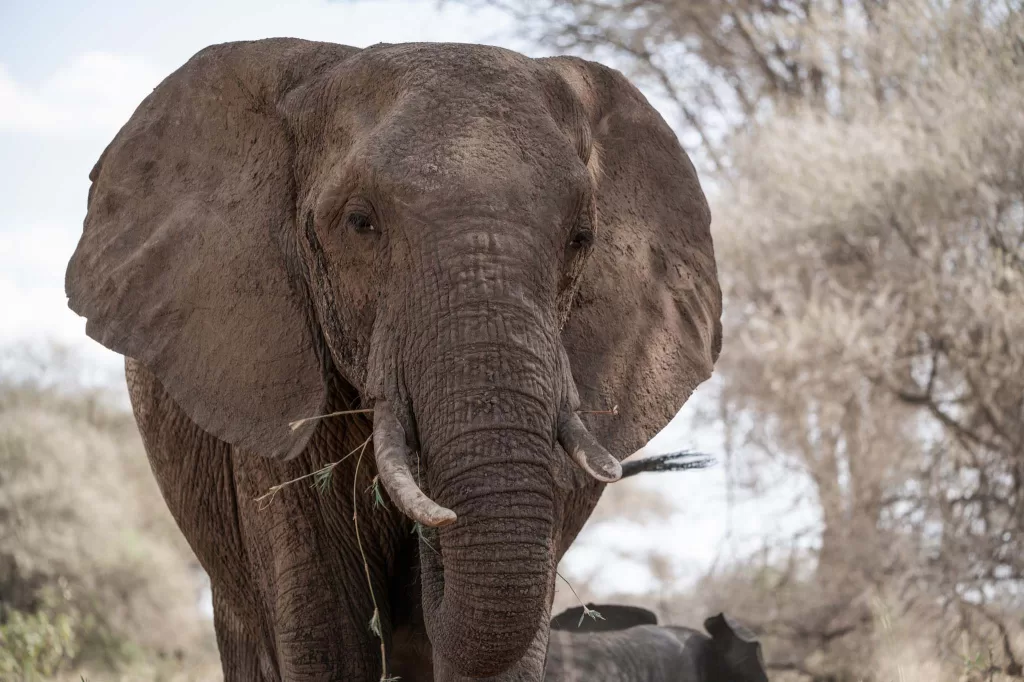
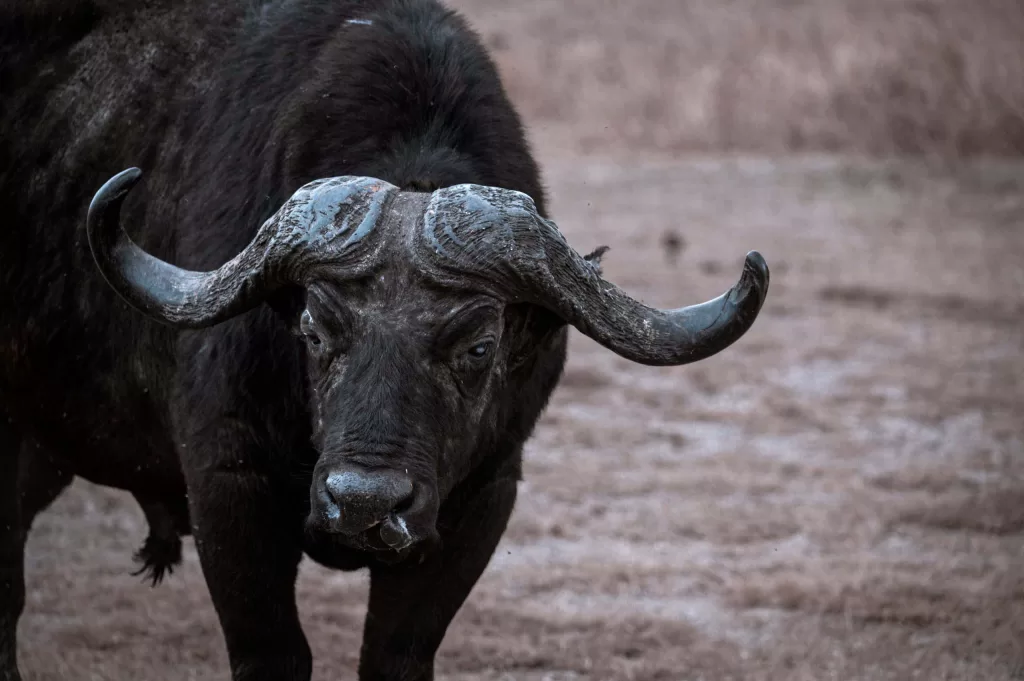
Note on the Mara river crossing:
It’s a natural spectacle that draws significant human attention. Be prepared for additional traffic in the area. During our safari, we were strategically based in Central Serengeti during the Mara crossing period. This positioning allowed us to have numerous sightings where we enjoyed complete solitude, even spotting lions and leopards! If you aim to witness the Mara crossing, consider extending your stay in Serengeti for an additional day to escape the crowds and savor its beauty.
Best Time to Do a Safari
The ideal time to visit Tanzania can depend on several factors, including your preferences and budget. Keep in mind that traveling during high season tends to be a bit more expensive. In Tanzania, the driest season aligns with the high season, running from approximately June to October. Expect rain during March to May, known as the long rains, and again in November and December, which are the short rains.
If your goal is to witness the Mara crossing, a part of the Great Migration, or the calving season in Serengeti, your ideal time might vary. The Mara crossing experience falls between June and October, while the calving season occurs around January and February.
If you plan to add some beach time or embark on a Kilimanjaro climb, these factors can also influence the best time for your visit. To simplify your decision, we’ve created a quick chart to help you navigate through the different seasons and climates:
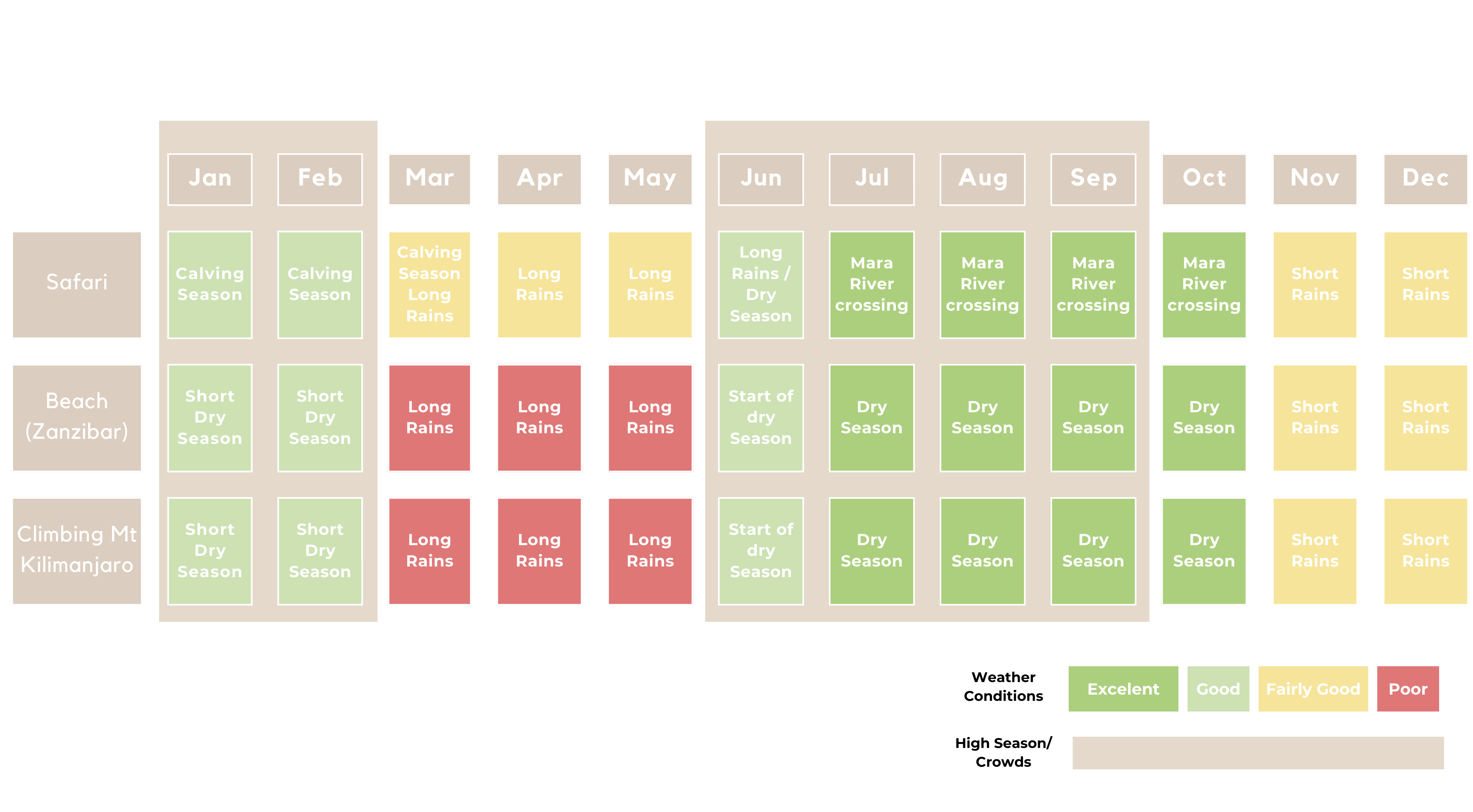
Meals and Vegan Safari
Your accommodation will take care of all your meals, ensuring you’re well-fed throughout your safari adventure. Generally, breakfast and dinner will be served at your lodge, while lunch is an exciting mid-savanna experience, a highlight in itself.
Depending on your tour operator, you can enjoy a variety of meal options. We were treated to hot, cooked meals, which included pasta, rice, lentils, vegetables, soup, fruit, and even wine – a delightful surprise. Alternatively, some operators provide lunch boxes with cold meals.
Now, here’s an interesting note: both of us are vegans. Despite initial communication hiccups between our tour company and the accommodations, these were easily resolved with the help of our guide. We were pleasantly surprised to find that they could accommodate vegan meals for us, and they were absolutely delicious. So, even if you follow a vegan diet, rest assured, they’ve got you covered.
What to Bring For a Safari
What you choose to wear on your safari is entirely up to you, but we do have some recommendations:
- Avoid Black and Navy Blue: These two colors are known to attract tse-tse flies, so it’s best to minimize wearing them.
We’ve found that trousers and blouses are the most practical clothing options for a safari. You’ll be navigating through dust, perhaps contorting yourself into unusual positions to capture that perfect shot, getting in and out of high safari jeeps, and spending the entire day outdoors – comfort is key.
Be prepared for fluctuating temperatures, which can get quite hot and chilly, so don’t forget to pack a sweatshirt. If you’re traveling during the rainy season, a raincoat is also a wise addition.
- Sunscreen: The Tanzanian sun can be intense, and sunburn is a real risk.
- Camera Gear: Don’t forget your camera, and if you have one, consider bringing a lens that allows you to capture distant wildlife more clearly.
- Bug Spray / Roll On: A reliable repellent can help protect you from bug bites.
Full Packing List:
- Light color trousers, shirts and blouses
- Pair of sneakers or hiking boots
- Sunscreen
- Bug spray
- Sweatshirt / Cardigan / Jacket
- Raincoat (if visiting during the rainy season)
- Camera and other gear you might have
- Beanbag
- Scarf (to protect your camera)
- Passport
- Visa (if needed)
- Binoculars (check with your tour operator if they provide binoculars)
- An E-SIM in case you wish to be reachable, check options here
Optional Activities
During our safari, we added a couple of extra activities to our adventure:
- Visiting a Maasai Village: The Maasai people are instantly recognizable by their iconic red robes, which stand out vividly against the landscape. They have a rich and vibrant cultural heritage, known for their distinctive attire, intricate beadwork, and traditional ceremonies.
Keep in mind that even though the Maasai kept some of their old traditions, they also had to adapt to the changes in today’s world. Drinkable water, children school fees, are among some of the necessities which require them to earn money to sustain their current lives. Expect an entrance fee (by the time we are writing this it was around 20 to 30 US dollars) and you will also be encouraged to purchase some of their local gifts, although this last one is not a mandatory contribution.
- Hot Air Balloon Safari: In our second day in Serengeti, we did a hot air balloon safari. While it’s a bit on the expensive side, costing around 500 US dollars, it’s money well spent. We booked our tour with a company named Serengeti Balloon Safaris.
You’ll have to wake up quite early, around 4 am to 5 am, depending on your hotel’s location, so you can arrive before sunrise at the departure area. They’ll walk you through some safety procedures and how to enter the balloon, which is a bit unique as the basket starts on its side and tilts upright for takeoff. Once you’re in the air, it’s an incredibly smooth and relaxing experience.
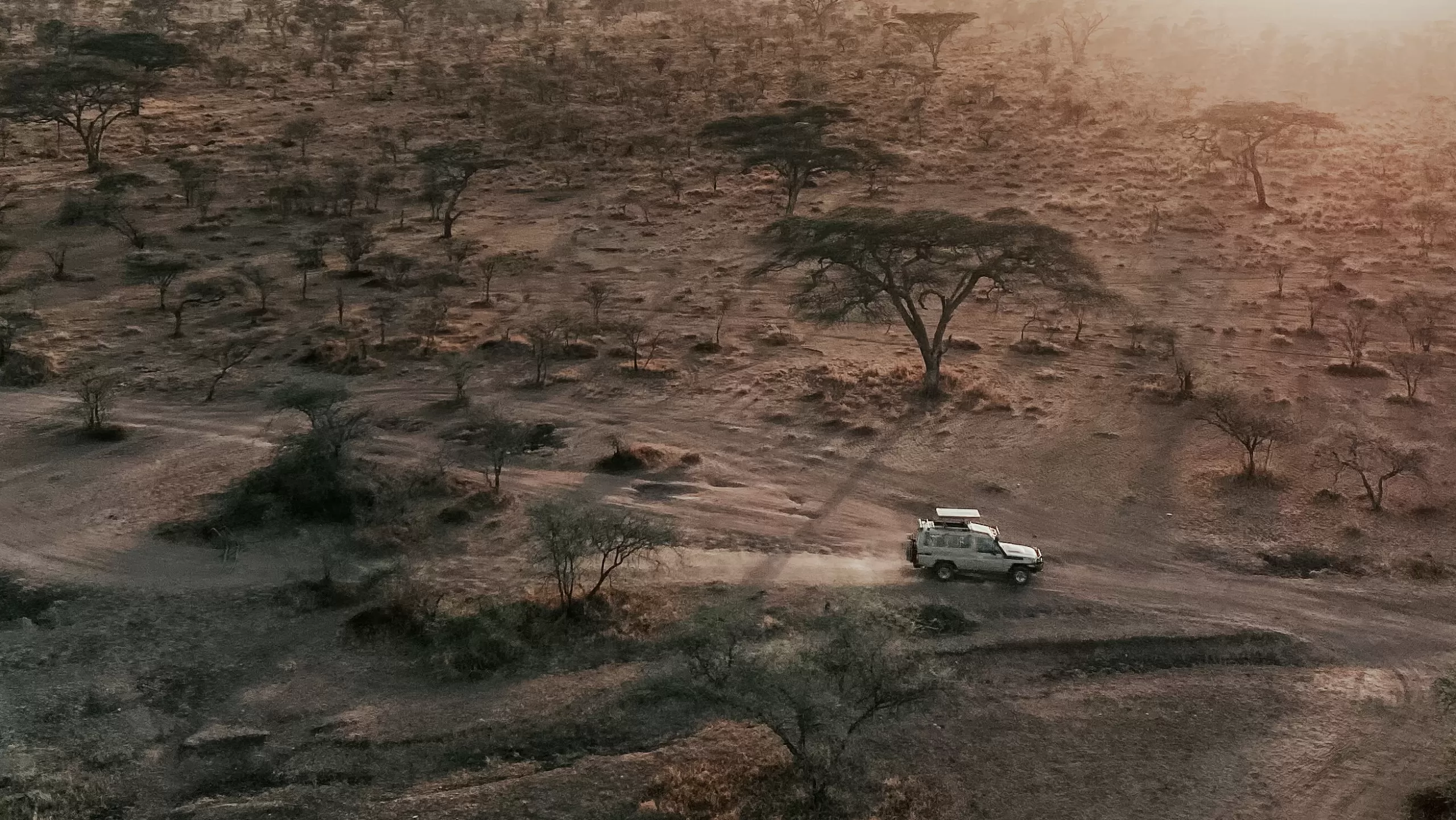
Photography Tips
Photographing wildlife can be quite a challenge. Many animals are most active during the early morning or late evening, and they tend to move around a lot. Some are masters at hiding. What’s more, while a few animals might be close to you, the majority will be at a distance and it can be difficult for short-length lenses or phone cameras to capture images.
Don’t get us wrong; phones and shorter lenses can produce great shots, but having more options can be highly beneficial. In our case, we rely on a 105-600 mm Sigma lens.
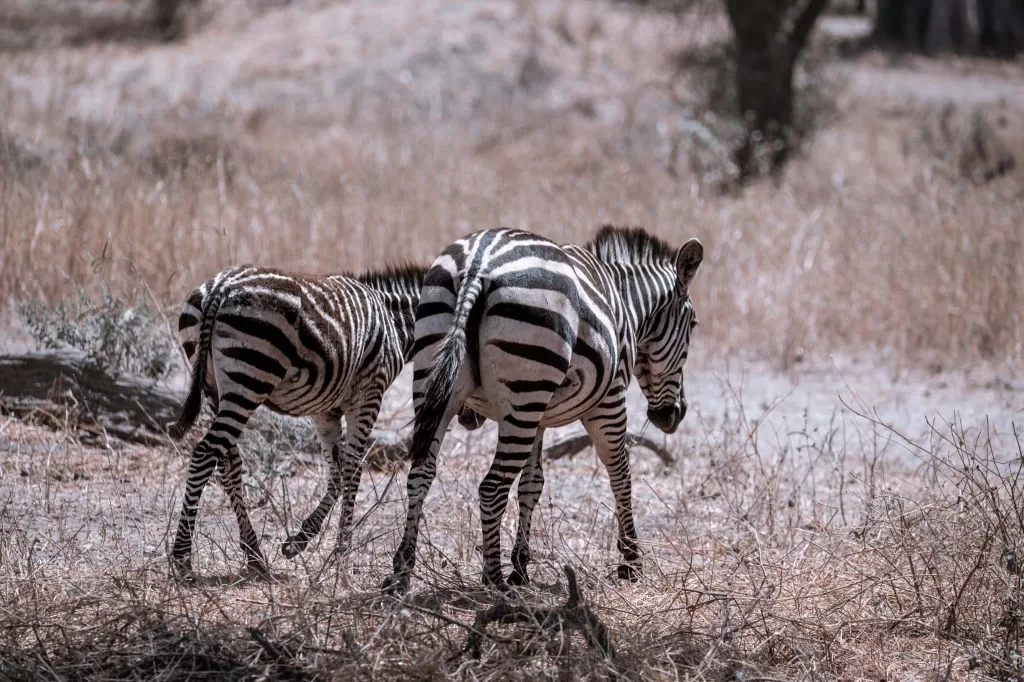
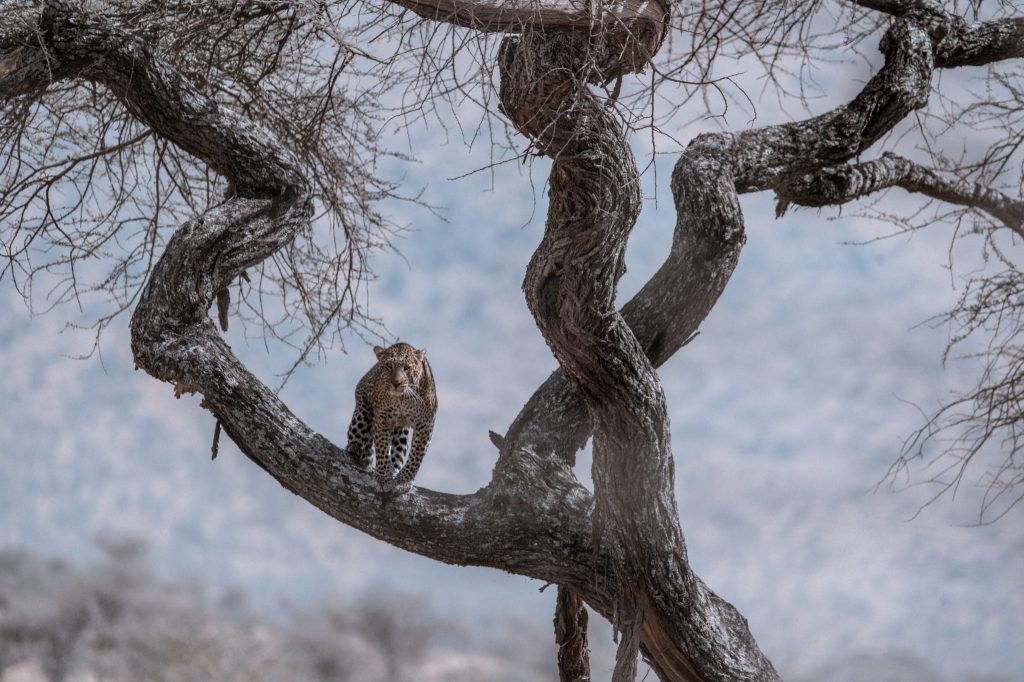
If you’re using a larger lens, there’s one piece of equipment that can be a game-changer – a bean bag! You can find these online, and as the name suggests, they are bags that you can fill with various materials. We use rice, which you can conveniently purchase in Arusha. After your safari, you can leave the rice at your hotel. The bag is completely sealed, so there are no contamination risks. Alternatively, you can fill it with other materials like beans or buckwheat.
Additionally, we highly recommend bringing a scarf to protect your lens from dust. We forgot to do this, and by the end of the day, we had to clean our camera thoroughly since it was covered in dust.
Health Precautions, Money and Logistics
We cover these topics that are specific to Tanzania in our 1 Week Guide, please check it for more information on visa, tipping policies and health related considerations during your visit:
Interesting Facts About Tanzania
- The national language is Swahili, but English is widely spoken
- Near 30% of the country is considered National Parks (completely protected landscape)
- Tanzania is home to the tallest mountain in Africa (Kilimanjaro)
- You can see tree climbing lions in Tanzania (we saw some in Serengeti, but we read that some of the lions in Tarangire and Manyara exhibit the same behavior)
- The Ngorongoro crater is the the largest intact caldera in the world
- Serengeti is home to the great migration
